

Composition
Copyrights Ganesh H Shankar, Sept 2007.
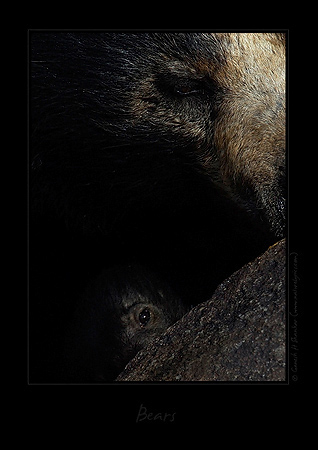 Com·po·si·tion
Com·po·si·tion
-noun
1. the act of combining parts or elements to form a whole.
This definition seem to apply to composition of photographs as well.
Let us dissect it a bit -
What are parts or elements ?
What is act of combining to form a whole ?
I am sure we can't come to a conclusion on answer to these questions. What are elements
to me may not be elements to others, my ways of combining them may not appeal to others
- so the composition is very personal hence I would like to discuss composition
as I see it. This article is all about what are elements to me,
and my thoughts on combining them to form a whole. Hence there are lots of "I"s and "me"s
here - sorry for that - so don't take it otherwise !
Though lots of it is personal I think in a successful composition photographer precicely
controls locus of viewers eyes through elements of an image the way he wants it. There is
not much scope for random movement of eyes. The photographer is in control of how we
see it. Is it not subtle and interesting ?
As I mentioned in my
other article
some images are successful in relating the experience of viewing to what is already learnt over
years. Composition can very subtly help photographer in creating that bridge through the
compositional elements.
Let me start with compositional elements which are close to my heart then me share my thoughts
on combining these elements to form a whole. First let me start with light.

Light
Photography is drawing with light. Light is the most important element in an
image. To me compositionally light can become primary element as in the image of a water droplet
on right or secondary element where in it is subtly used along with other elements in the frame -
like in the image of the dragon fly below.

So here light as an element is seen through other elements. When we talk about light here we implicitly talk about
presence or absense of it too ! Of course we need light to see any thing - but let me focus on its usage in composition
as an emphasizing element to focus on or group other elements. We will get back to it in a minute. Let me go through the next element
of composition - the space.

Space
Interestingly a few of my friends asked me in the past - you have 600mm f4 lens why don't you make close portraits ?
Is is very difficult to approach birds in India ?! Good questions. Interestingly during initial years of photography
when I was not having 600mm f4 lens I wanted everything up-close. I wanted tack-sharp images where in I could count
strands within feathers. After I bought 600mm f4 my taste buds started responding differently ! Of course I am not
saying 600mm f4 does not have a use in the field. The way I use it now is different - I don't always need frame
filling perspectives. People generally call space a negative space - for me it is either positive space
or just space! Let me share my thoughts on space a bit later. Now to the next element - eye !
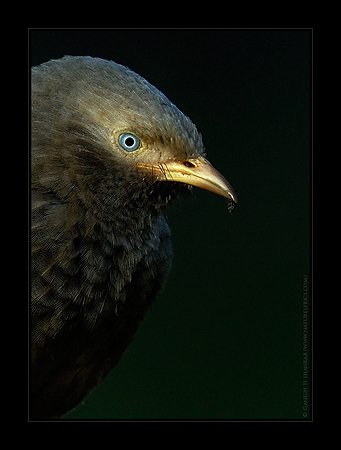
Eyes
No one probably considers eye as an element in composition but I think in wildlife photography (excluding landscape here) I would like to give a special status to eye as a compositional
element. Though not as fundamental as light and space in lots of my images eye plays a key role in composition. Aren't we keen on getting that catch light ? Combining
it with rest of the elements in an effective way is very key to success of a composition. For example eye plays a key role in images of bears above (eye of the cub in one and eye of the bear in the first image).
The image of the babler on left is another example. So is the image of a frog below. Eyes become pivotal point in lots of such compositions.
Nevertheless, eye may not be a key element in all compositions.
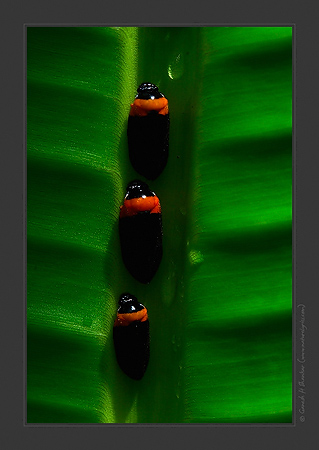
What about - forms, shapes, lines, patterns.. ?
I think these are derived elements of composition - light creates those in this three dimensional world. So I don't consider them as
fundamental elements of composition. In my view they may result in an effective composition
than they being fundamental elements by themself.
OK, with that short discussion on elements let me share some of my thoughts on combining elements
to form a whole.

Combining light and space
Beauty of our subject gets amplified with right light. I often use light to focus viewers on a certain area with in the frame
and often use space to create a mood. Effective combining of light and space can create a beautiful composition. Further, effective
use of light also requires precise exposure control for which I use incident light meter. Camera meters often get fooled
so most of the time I rely on incident light meter - more so for my taste of compositions.
In this image of the Blue Tailed Bee Eater, I had several choices for quality of overall light from pure
green background to the one presented here. Here I wanted to keep all the light focussed on the bird to increase
the drama. Coming to decision on the space, this is a high resolution image close to full frame. I can just as well crop it
show bird alone as shown in the crop below which is another example of a composition where space is not an major
element. Personally I think below crop is a weaker composition without a sense of place and an abstract mood (which is seen
in the image on left). Probably you need to see them in larger size (click on them!) to appreciate what I am saying.

Suppose we have an image with good amount of space in the frame relative to the subject and if we start cropping it then I think
about two compositions with with different space-to-subject size may be pleasing. One obviously as a portrait
the other one with subject relatively small in frame. The compositions of latter type needs precise subject/space
ratio - this may also vary a bit from person to person.
Further, not all small-subject-in-frame is my preference. I prefer portraits when I have something interesting to show -
may be just the beauty of the subject or details. The image of an egret below is an example.
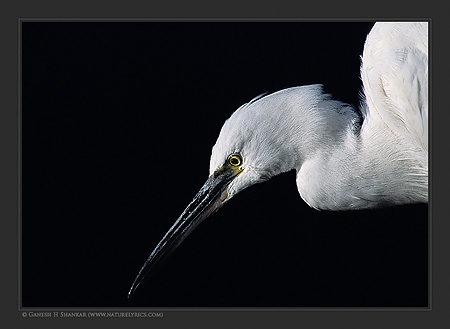
Let me try to share what I think about space and fine details with an anology in music.
When you are free and have peace of mind close your eyes and listen to the track Vara Vallabha by N Ramani (flute) and then listen to the track Pahadi by Pandit Hariprasad Chaurasia. These tracks on web are only small clips - you may want to buy them if you like !!
The kind of pleasure these two forms of composition gives me are different. While one form stimulates brain cells related to
sensory organs (ears/eyes) the other form stimulates cells related to processing experience in life. While one form is
absolute the other makes a reference.
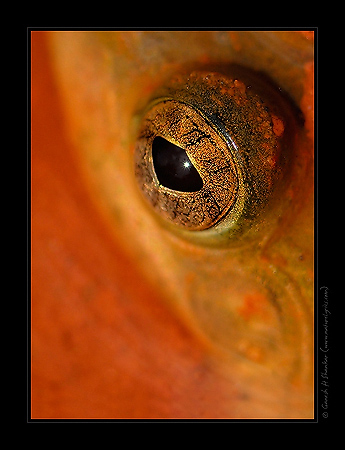
One technique I often use while doing macro is trying to combine eye and space with selective depth-of-field.
The space here is part of the subject due to shallow depth-of-field and it is used
for highlighting the another element eye in the composition. Image on the right is an example. Another
example is here.

Some times we may have a story to tell in the image. In those cases combining light and space may be done in such way
that it enhances the story. Focal point related to story can be placed appropriately in the frame. Following (or not following in some cases) thumb rules like rule of
thirds may help here. This limits the use of space and light also in the image. Use of space to create mood may not be applicable
here. The image of ant and aphids on left fall in this category. Ants and aphids share a symbiotic relation - ants protects aphids and
aphids give ants honey dews. You may be able to see a tiny drop of a dew emerging out of back of an aphids which the ant is ready to consume in the
image (click on the image to see it clearly). In such images combining different elements (composition) is governed by effective story telling through
the image. When story is strong composition and asthetics may even become secondary - though they can definitely add to it.
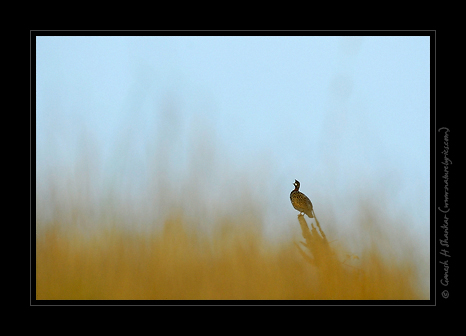
Mostly thats all I have to say as now about composition. Tastes change, what I liked a few years back is not
what I like now. What I like today may not be what I like a few years from now. New perspectives may emerge.
So I would say this is an in-complete article. I hope to re-visit this topic in years to come and if necessary will
update this article !
You have reached so far reading this?! I hope you may be able to apply some of these thoughts while creating
your own images.
Good luck !!
- Ganesh H Shankar
If you have a view on this article please write to me at 
My other articles